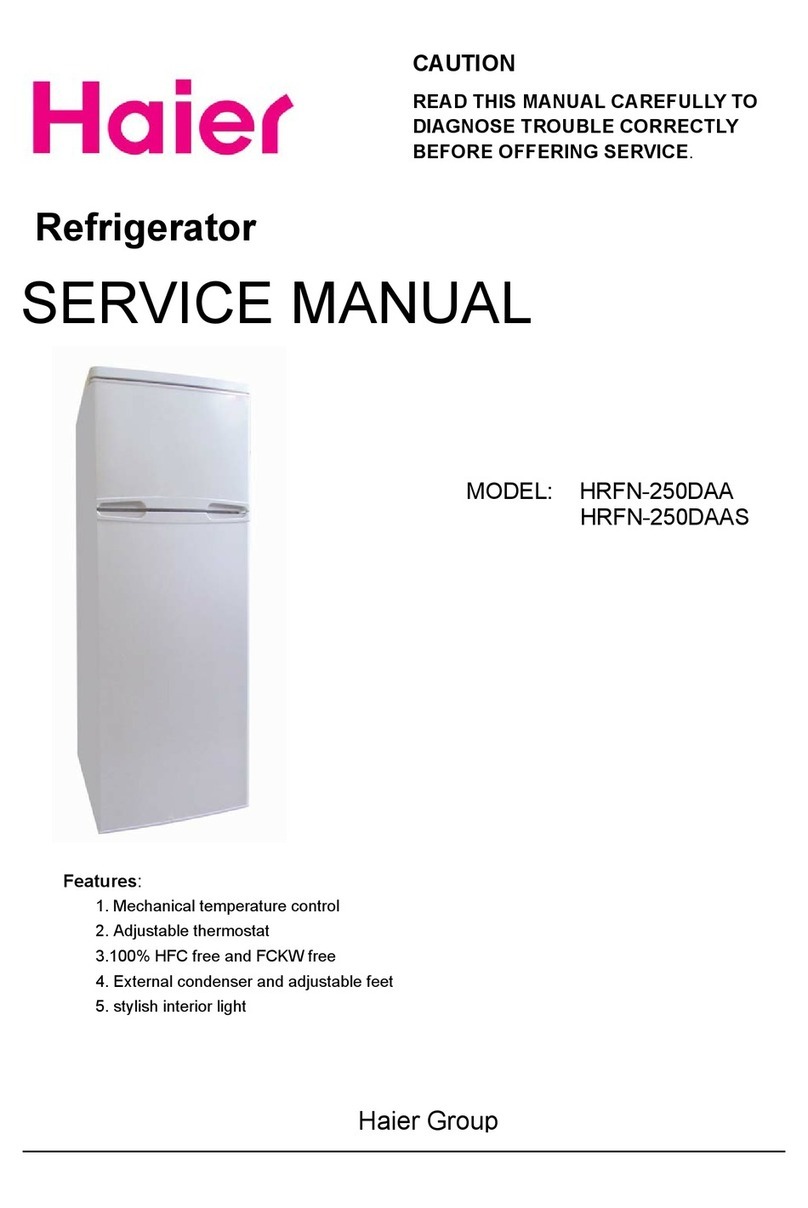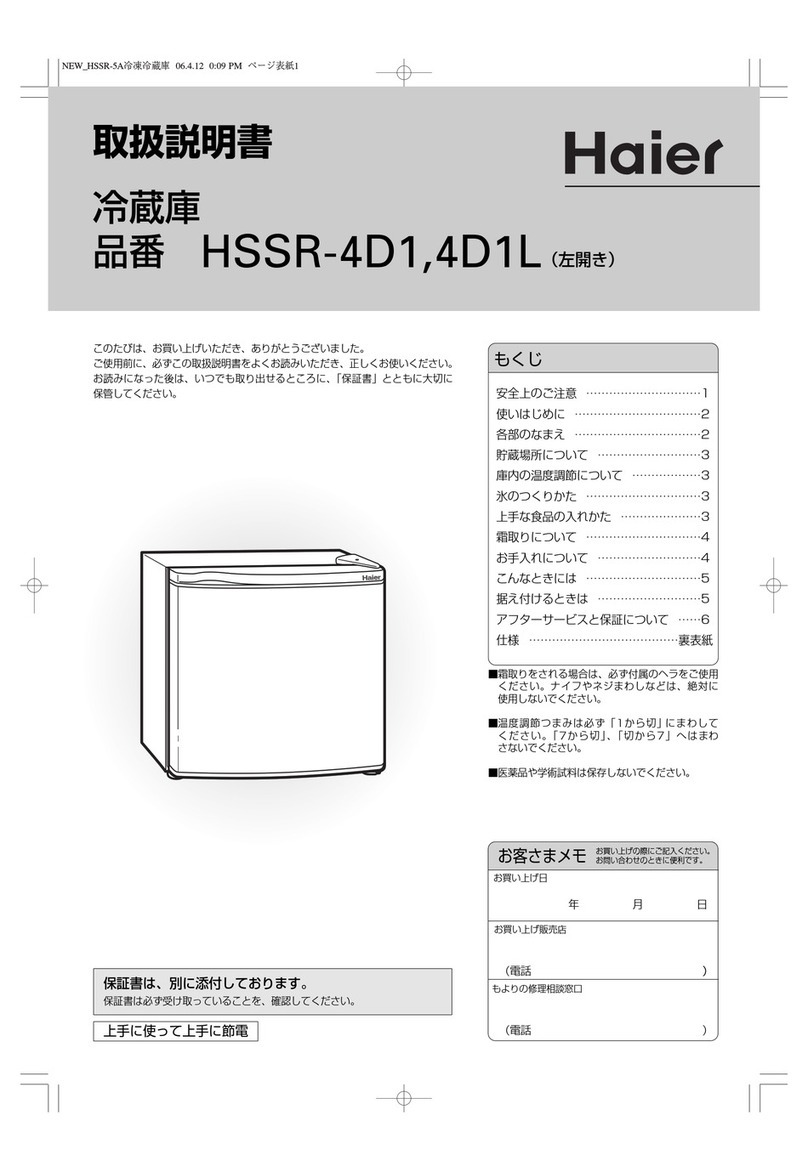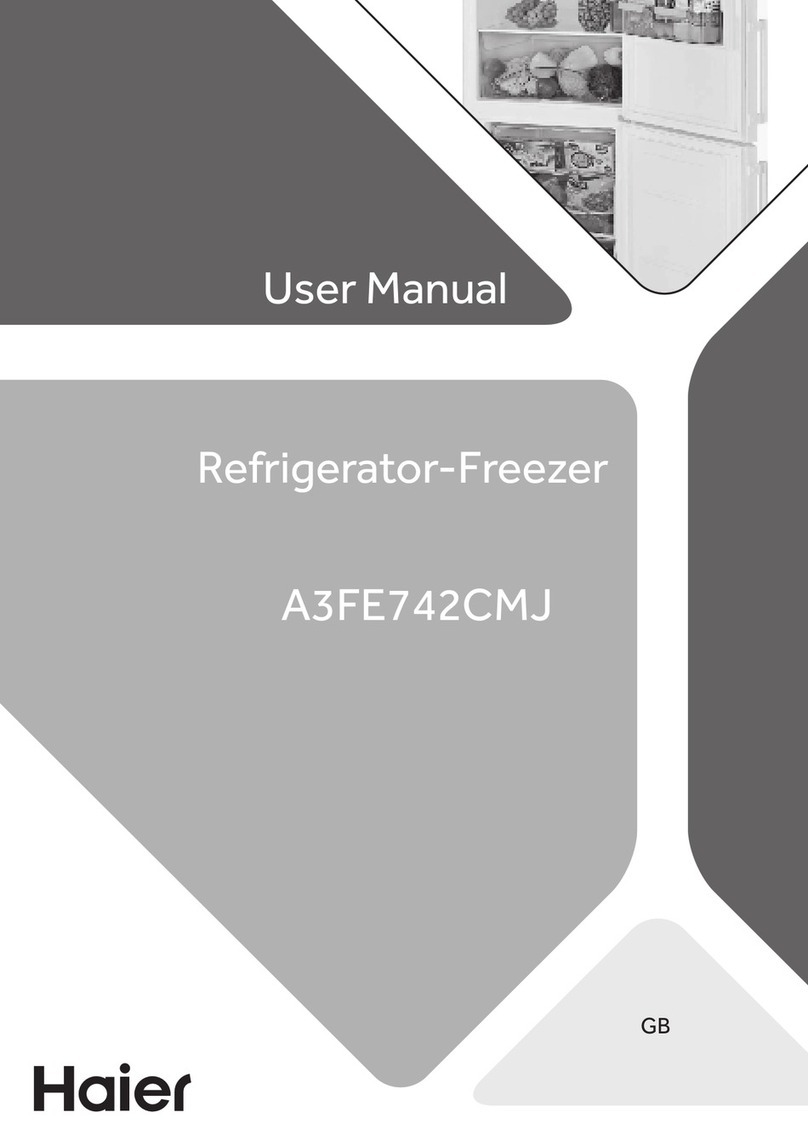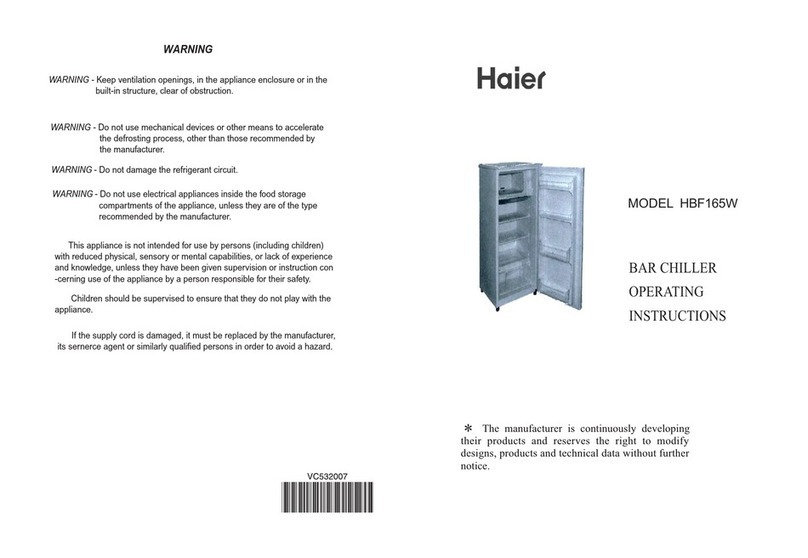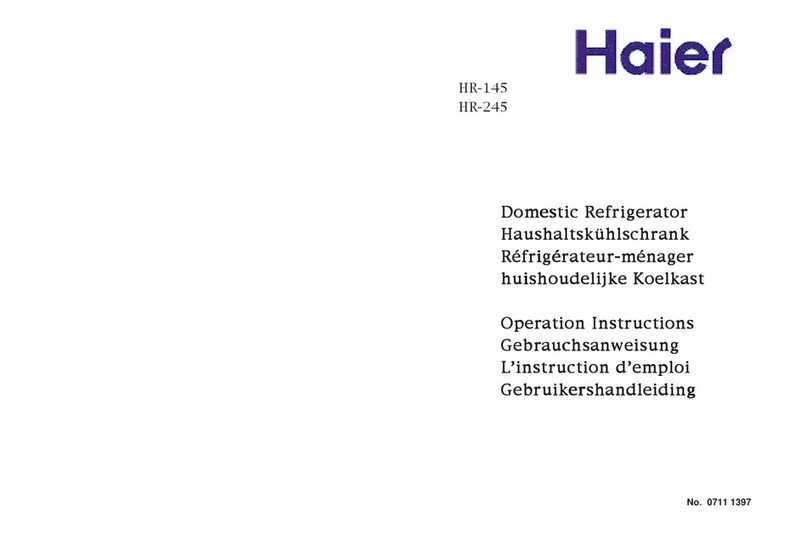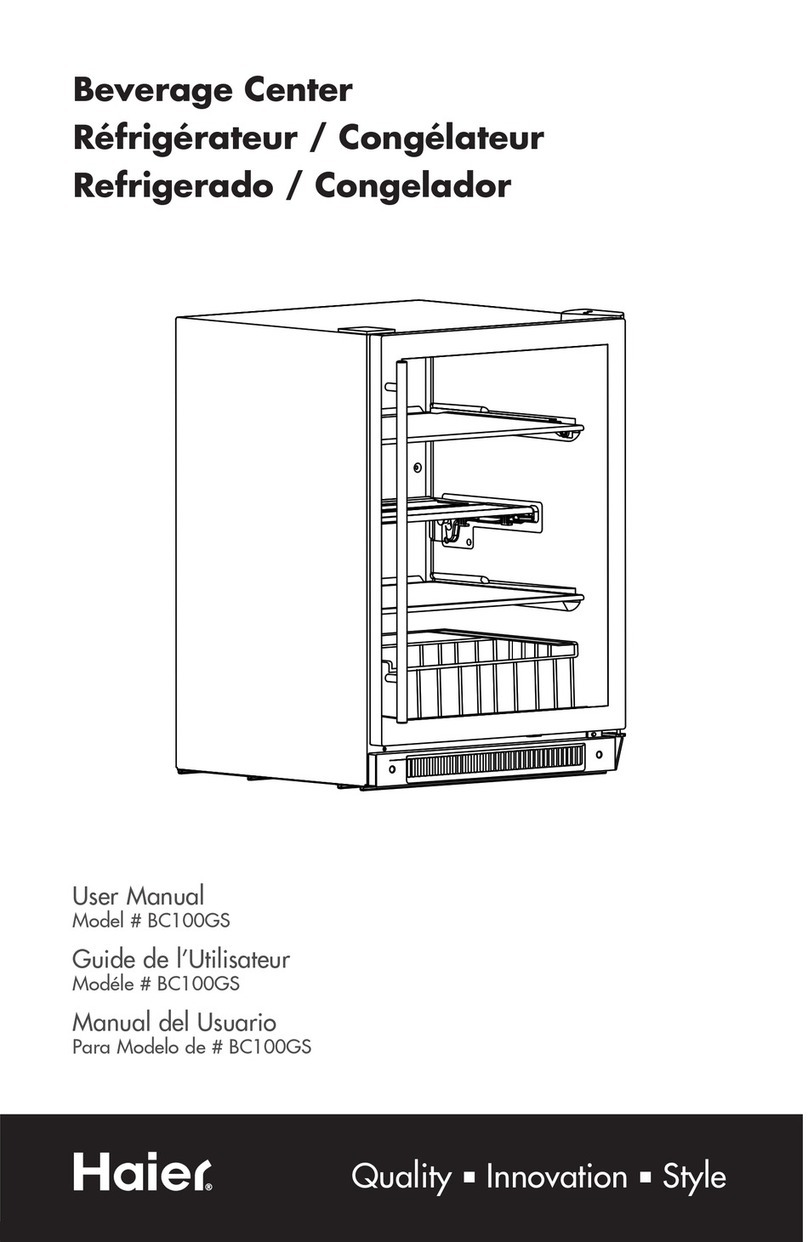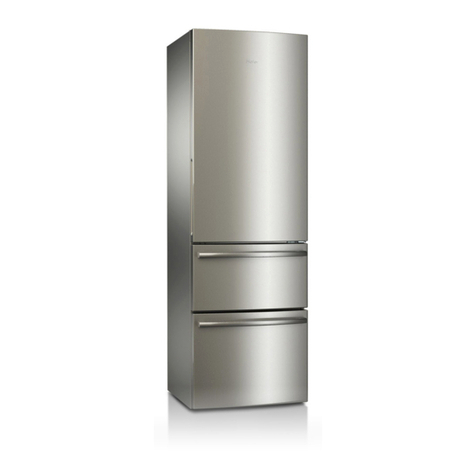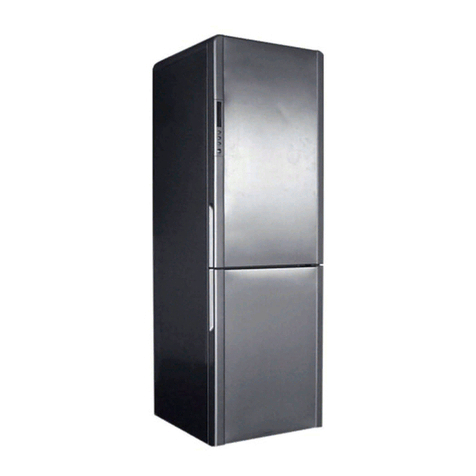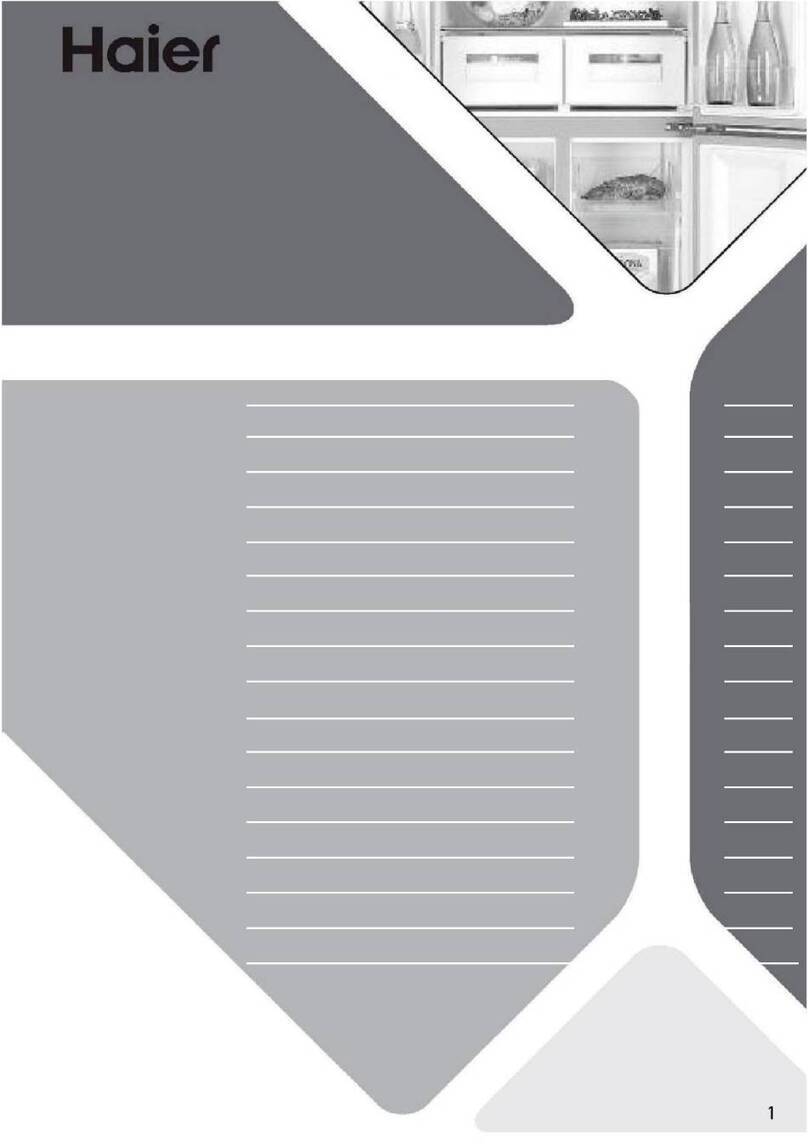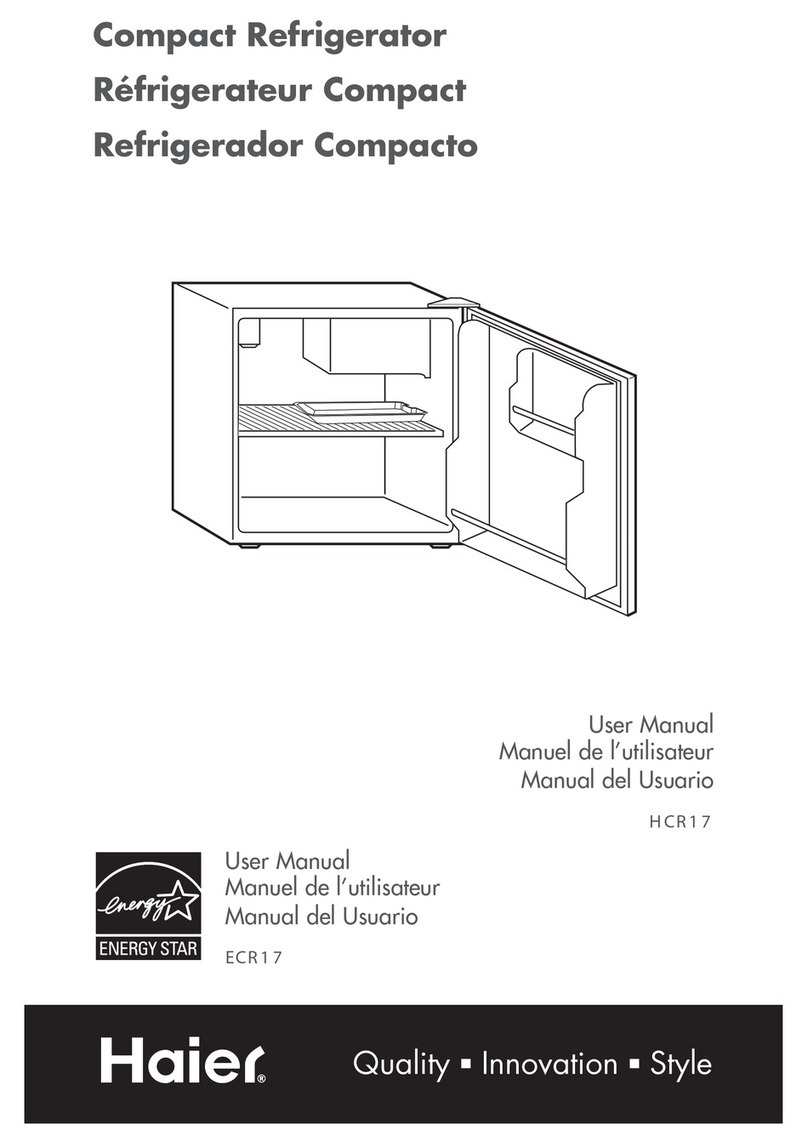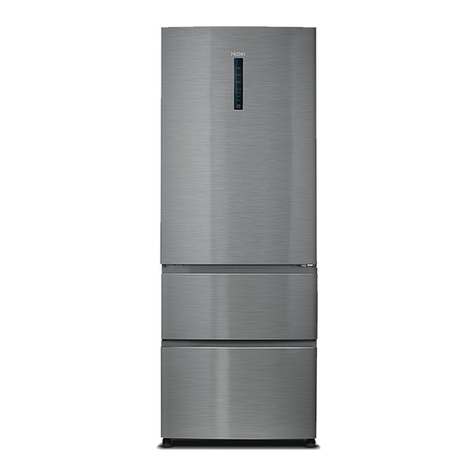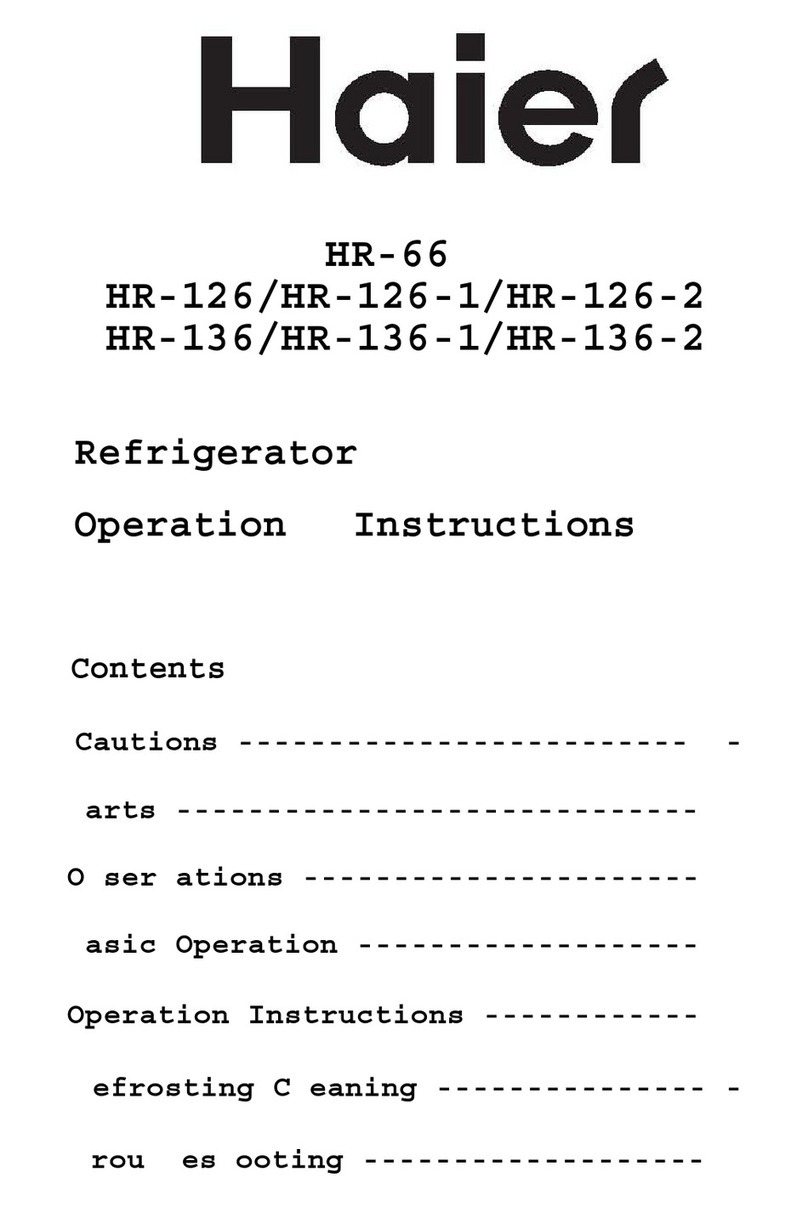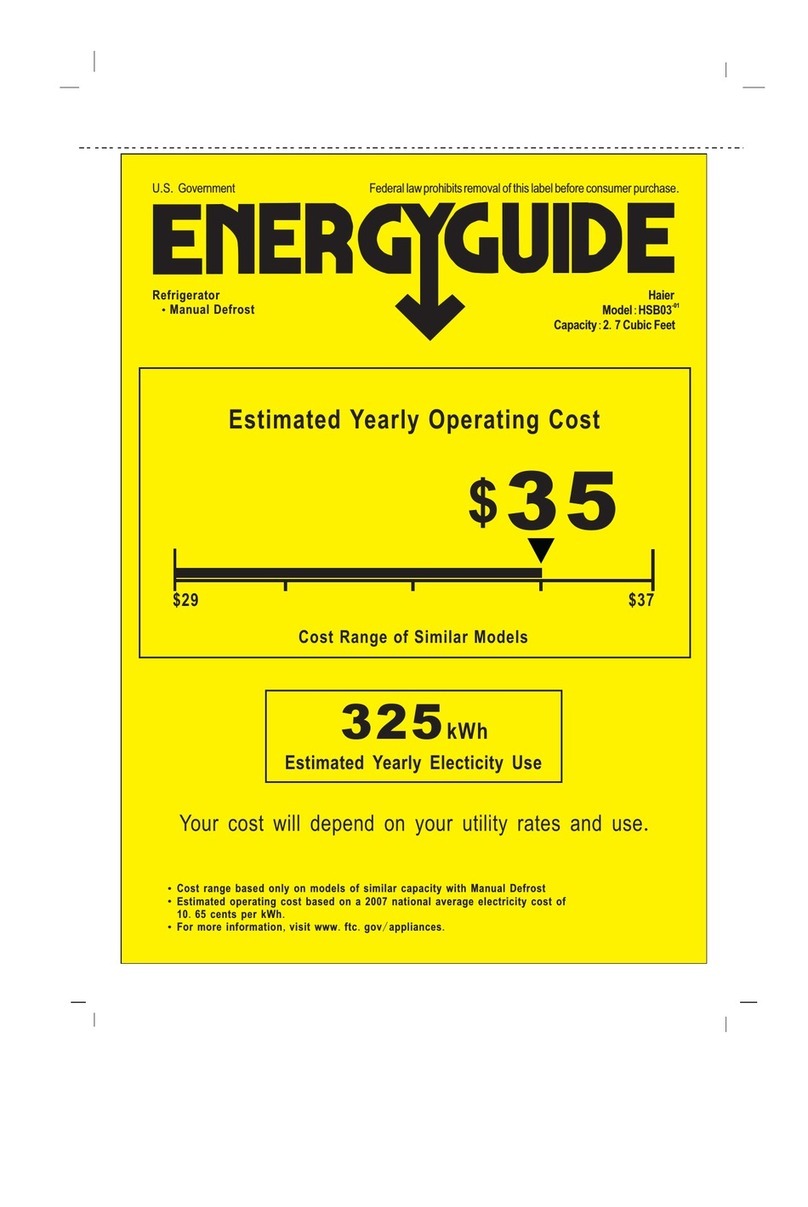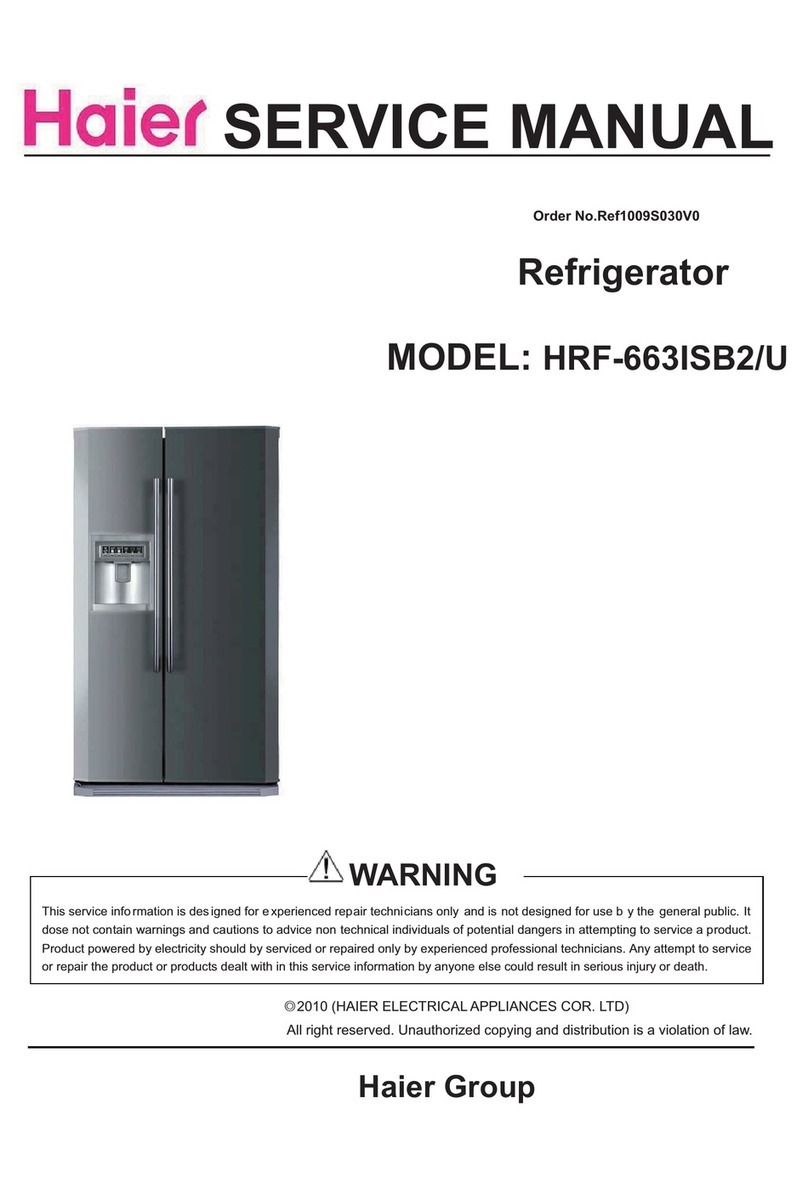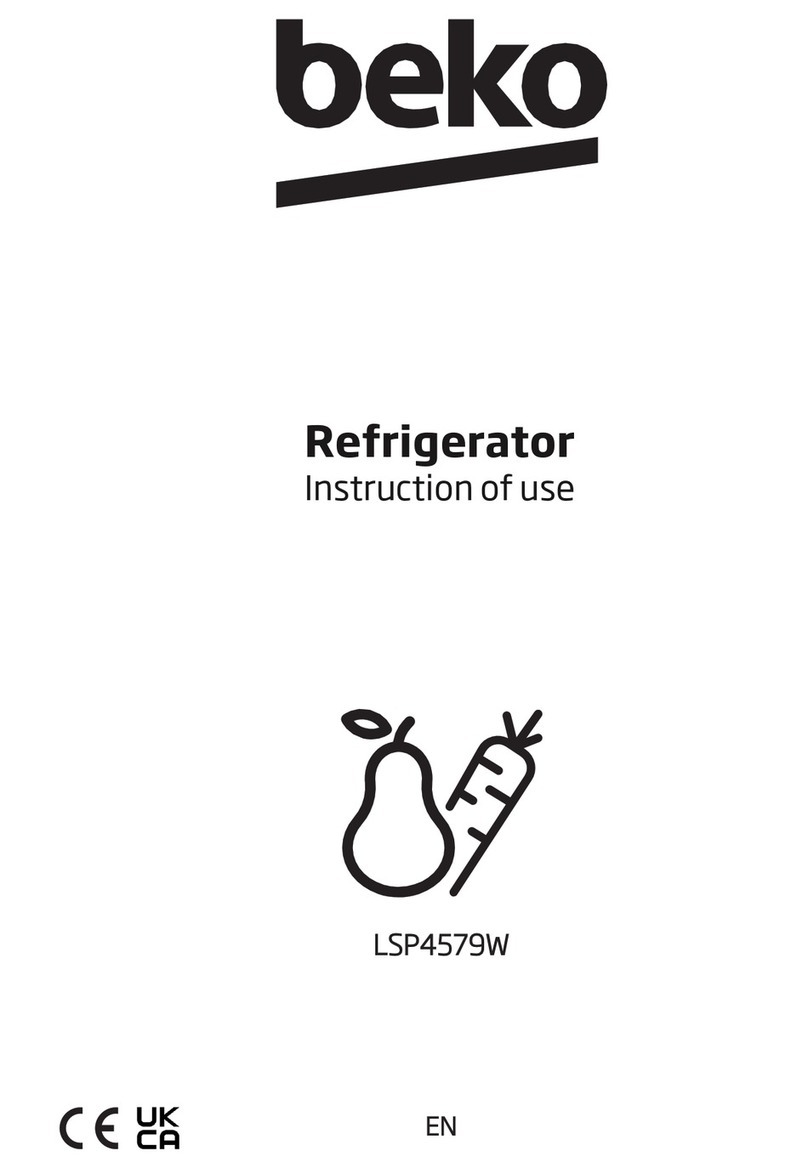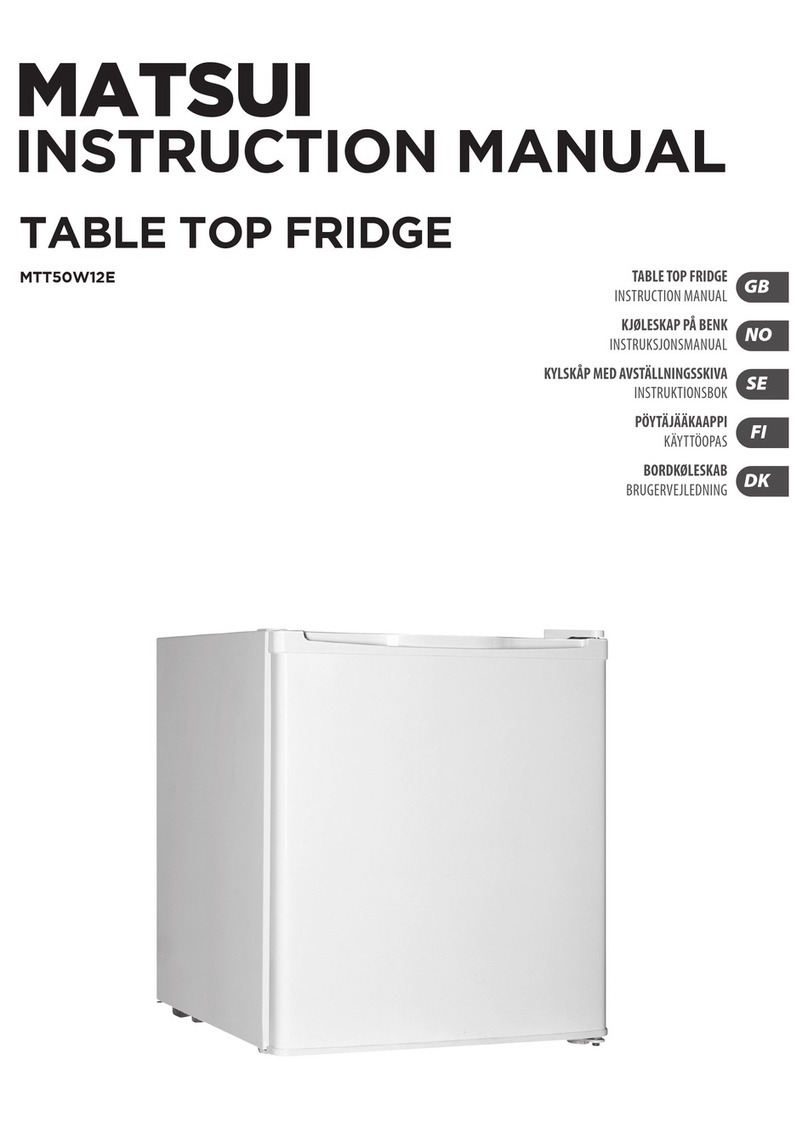Intended use: This appliance is intended to be used in
household and similar applications such as staff kitchen areas
in shops, offices and other working environments; farm houses
and by clients in hotels, motels and other residential type
environments.
Things to do...
Make sure that the plug is not trapped under the refrigerator.
Hold the plug, not the cable, when unplugging the refrigerator.
Take care not to roll over the power cord or damage it when
moving the refrigerator away from the wall. Take care that the
plug is not damaged, if it is, if possible switch off the power
supply and carefully unplug it and consult an authorized service
agent for replacement.
in the vicinity of the refrigerator. In the case of this occurring,
turn off the valve of the leaking gas; open doors and windows
but do not plug or unplug the power cords of the refrigerator or
any other appliance.
Unplug the refrigerator for cleaning or maintenance or because
of lamp replacement.
Open the doors by the handle, caution the gap between the
When unplugging the refrigerator allow at least 5 minutes before
restarting, as frequent starting be damage the compressor.
Leave the ventilation openings free of obstruction.
When discarding the refrigerator, to avoid the accidental trapping
of children, please remove the refrigerator doors, door seals and
shelves and put them in an appropriate place.
The refrigerator should be placed in a well-ventilated place not
far from a drink water source.
Ensure a space of at least 20 cm above and 10 cm around the
refrigerator.
The appliance must be positioned so that the plug remains
accessible.
Things not to do...
The refrigerator is operated by a 220-240 VAC/50 Hz power
may cause the refrigerator to fail to start, or damage to the
temperature control, or the compressor, or there may be
abnormal noise when the compressor is operating. In such a
case, an automatic regulator should be mounted.
Adedicate socket with reliable grounding/earth must be
provided for the refrigerator. The refrigerator’s power cable is
3-cord (grounded/earthed) socket. Never cut off or dismount the
third pin (grounding/earth). After the refrigerator is installed, the
plug should be accessible.
the refrigerator.
Do not store medicines, bacteria or chemical agents in the
refrigerator. This refrigerator is a household appliance. It is not
recommended to place materials that require strict temperature.
with liquids) on the top of the refrigerator, to avoid personal
injury caused by falling or electric shock caused by contact with
water.
Do not swing from the door or bottle racks on the door. The door
may be pulled away from vertical, the bottle rack, may be pulled
away, or the refrigerator may topple.
Do not step on the freezer storage compartment door, shelves
Do not touch the inside surface of the freezer storage
compartment when in operation, especially with wet hands as
your hands may freeze onto the surface.
To ensure the refrigerator’s electrical insulation, do not spray
the refrigerator in a damp area or a location where it may be
splashed with water. Clean and dry water splashes and stains
with a soft clean cloth.
Disassembly and alteration of the refrigerator must be
authorized. Any sharp or rough movement of the refrigerator
may damage the cooling pipes. Property loss or personal injury
may result.
Repair of the refrigerator must be performed by professional
personnel.
Never store bottled beer or beverages in the freezer, as these
will burst during freezing.
Do not place the refrigerator in direct sunlight or in a place
where it is exposed to heat from stoves, heaters or other
appliances.
Do not leave refrigerator’s doors open without the presence of
an adult, and not let children get in the refrigerator.
Do not let infants or children to climb into the freezer drawer.
Do not use electrical appliances inside the refrigerator, unless
you are the type recommended by the manufacturer.
Do not damage the refrigerant circuit.
Do not use a hair dryer to dry the inside of the refrigerator. Do
not place lighted candles in the refrigerator to remove odors.
Do not spray volatile materials such as insecticide on any
surface of the appliance.
Open or close the refrigerator doors only when there are no
children standing within the range of door movement.
This appliance can be used by children aged from 8 years and
above and persons with reduced physical, sensory or mental
capabilities or lack of experience and knowledge if they have
been given supervision or instruction concerning use of the
appliance in a safe way and understand the hazards involved.
Children shall not play with the appliance. Cleaning and user
maintenance shall not be made by children without supervision.
Do not store too much food in the freezer storage comportment
to avoid longer operation time of the compressor or falling food.
It is recommended not to exceed the load line of the drawers.
The total weight of the food should not exceed 30 kg. To prevent
the food from failing on the ground, do not pull open the freezer
drawer too strongly or at an angle.
Do not use mechanical devices or other means to accelerate
the defrosting process, other than those recommended by the
manufacturer.
In case of any problem with the light of refrigerator, please
contact with our customer service department for handling, and
users cannot replace it by themselves.
M
N
D
D
Please contact the service agent to dispose the appliance
because the flammable blowing gas was used.
If the supply cord is damaged, it must be replaced by the
manufacturer, its service agent or similarly qualified persons
in order to avoid a hazard.
